Charles Pakana (Victorian Aboriginal News)
It was in 1985 that Gunditjmara man, Uncle Jim Berg, along with barrister the late Aaron Kasten and jurist Ron Merkel, sued the University of Melbourne and the Museum of Victoria for the return of Indigenous cultural material collections.
The resulting success of that action was the founding of the Koorie Heritage Trust, located now in Melbourne’s Federation Square precinct. The Trust is often regarded as the go to place to purchase First Nations gifts and artworks. But in keeping with its origins, it is significantly more than just that. Joining me today to talk about this and the Trust in general is Kulkalgal, Kemer Kemer Meriam man Tom Mosby, CEO of the Trust.
Tom, welcome to the program and thanks for joining me today.
Tom Mosby
My pleasure. Very pleased I can do this and in person as well, which is a break from what we’ve done in the past.
Charles
Tom, let’s just look a bit more about the origins of the Koorie Heritage Trust, because people don’t understand that, but those origins really speak to the very spirit of the place. As the CEO, give us what you would normally explain to people as the origins.
Tom
Look, the origins of the Trust, as you mentioned, and even the name Trust, it was about actually holding in trust for Victoria. And it’s actually broader than Victorian because, I mean, it’s beyond the borders that were set post colonisation. So we’re talking really Southeast Australian Aboriginal communities, culture that crosses into New South Wales and into South Australia as well. So the Trust was really set up to protect the cultural heritage and cultural material coming out of this region of Australia.
And it was very much about stopping things also being sold overseas. One of the things that Uncle Jim and the Two Ronnie’s, as they were known, it was also about the skeletal remains that were being collected and taken overseas as well. So it was really about ensuring that Victoria and Southeast Australian Aboriginal culture was kept and held in trust for the community.
Charles
So the big thing is that, as I mentioned in the introduction, a lot of people think, well, if we want to get a First Nations gift, we’ll go to the Koorie Heritage Trust. But it’s a heck of a lot more than that. It’s a bit like the iceberg. The little tip, you see, really hides the rest of it. So what is the rest of it? What does this place actually hold?
Tom
Well, I think I’ll turn it the other way, because the shop and the gifts that you can actually buy at the Trust, it’s actually a small part of the much bigger thing and bigger things that we do at the trust. So one of the key things we are an art and cultural organisation.
So it’s actually about showcasing the material heritage of Victoria and Southeast Australian Aboriginal communities. But we also say now First Peoples, because it’s also recognizing that there’s been Aboriginal people and Torres Strait Islanders from around Australia that moved to Victoria, that now call Victoria home.
Their descendants are now living down here. So this is really about representing First People’s art and culture in South East Australia. For us, we do it through our exhibitions program. We also do it through our collections.
So we have an amazing collection which just focuses on the art and cultural heritage of Southeast Australia. We also have education programs. We do tours and walking tours along the river, the Birrarung river, the Yarra. We do Cultural Awareness Training. We also have a very important Koorie Family History Service, which is about genealogical research and about connecting the Stolen Generations back to community.
So all of that really is the other work that we do. On top of that, we then have our retail, so people can come visit us, but at the same time they can actually take a gift away with them.
Charles
What about researchers? I mean, we typically think about collections as being enormously valuable resources for researchers, academics and even journalists. Is that something that this place provides?
Tom
Oh, very much so. So our collection dates back to 1985. There was the gift of a grinding stone that was given to Uncle Jim.
Charles
Yep.
Tom
And so out of that grew the collection that we now have. And in the collection we have material from the 19th century. Some fantastic. We have great William Barak watercolour from the 19th century. We have shields by Barak as well, but right up to very contemporary.
So we’re always collecting and I think, and it’s all Victorian, like I mentioned, Victorian material culture. So it’s a great resource for researchers, but also for our First Nation, First People, artists living in Victoria who are wanting to reconnect with material that come out of their community, but also looking at the design and style that is unique to down here.
One of the big things that we’re really keen on promoting is when you come to Victoria, a living Aboriginal culture down here that is different to the Northern Territory, to Western Australia, to Queensland, people still think Aboriginal art is dot painting. And we continually struggle.
Charles
That’s a hairy old topic, that one.
Tom
And so for us, it is actually about promoting the fact that, and supporting our artists to actually, for them to be developing their own personal style. But looking at the design that’s unique to this area as well.
Charles
I just want to bring you back. You made mention of Uncle William Barak’s work and some of his stuff that you’re actually holding here. That then brings to mind the question, well, what’s the relationship then with Traditional Owners right across Victoria? Because Uncle William’s work is very highly regarded within the Wurundjeri Woi wurrung.
And as a lot of our listeners know, in 2023 there was a huge success with getting some of that artwork back [to Australia]. So what is the relationship that the Trust has with Traditional Owner groups and what are some of the challenges?
Tom
So, I mean, the relationship for us, it is about representing all of Victoria. So it’s about actually showcasing and collecting material from around the state so that when a particular community they can visit us, they can actually see what’s in our collection.
And that’s a very important part of the work we do. It’s about that representation, it’s a broader representation. It’s also about acknowledging that when we have visitors coming into Melbourne and whether they’re from interstate or internationally, they don’t have time to go into the regional sector.
We would want to represent as much as we can the regional sector physically here at the Trust, but hopefully digitally, virtually online, that people then can explore much broader with all of the different parts of the state and the different communities we have here.
The difficulty we have is being able to actually physically be able to engage and go out into community and do things with community as well. We try as much as we can to get community into the Trust, but we need to be out there and doing more in the community as well.
Charles
Well, you made mention of the fact that you’re trying to provide a representation, I’m going to paraphrase your work, but a representation of all the cultures right across Victoria, there are different cultures across Australia. There are within Victoria as well. How do you do that? I mean, how many people have you got on the ground? Because you would certainly need a small army out there constantly, one would imagine.
Tom
Exactly. And that is part of the, I suppose the difficulty that we have in being able to connect with all of our communities within Victoria. We’re a small organisation. At the end of the day we only have, I think, 28 people and that’s include casuals and part timers.
So it’s a very small team we’re working with and to be able to actually get more of ourselves into the regional community because we’d love to actually take our collections out into the regional communities as well. But we just don’t have the resource to be able to do that.
Charles
Is that a call out to the state government for more resources?
Tom
It definitely is a call out to the state government for more resources. But it is. I mean, it’s financial, but it’s also getting more staff on board, supporting more staff, supporting more of our mob to actually come in that we can train up as curators, as tourists, tour guides, or even just putting them front of house, working front of house, visitor experience, retail in the shop as well.
We still struggle in terms of building that workforce and being able to actually support that workforce as well.
Charles
Has there been a change in the direction or the focus of the Koorie Heritage Trust since, let’s say, 2018? Since we’ve had advancing the Treaty Act introduced by the state government, the formation of the First Peoples’ Assembly ofVictoria, the Yoorrook Justice Commission, more recently, the Treaty Authority. Has this had an impact at all on the Koorie Heritage Trust?
Tom
It has, yes and no. I mean, look, going back to when we first started… 32 years ago, the original intent of the Trust was about preserving and protecting. It was very much looking at a sort of historical legacy that we needed to, and quite rightly, we needed to actually preserve and protect.
Of course, we’ve moved on from there because I think the work that the Trust put in in those early days, we’re now at a stage where we’re more about celebrating what we have here in Victoria. It’s about nurturing, promoting, supporting, celebrating.
And so we’ve consciously changed the words in our sort of vision statement to reflect that. I think with what’s happening with Treaty, reconciliation, all of that, all of the work that we’re doing in that space of promoting and supporting really fits into supporting the treaty process, supporting reconciliation.
Charles
So let’s talk about this change from preserving and protecting, which still is obviously a core basis of the organisation. But now the celebration, what role do you see that the Koorie Heritage Trust has in promoting understanding of First Nations across Victoria or First Nations Full stop, reconciliation and self determination?
Tom
I think we have a key role physically where we’re located. I mean, we’re in a very accessible part of the city. We’re at Federation Square. It’s easy for people to actually come to us and to Federation Square, we’re more visible. So when you have your sort of tourist, international, interstate tourists coming in, people coming to Federation Square, walking past, they find the Koorie Heritage Trust, it’s far easier for people to actually locate us and to actually then engage with us in the work that we do.
So by being physically located in this very central place, it’s actually much easier for people to actually come to the trust. As soon as I walk through the door. It’s an educational experience. We’re in a building that was built, God, 20 odd years ago. But when we took over the building, part of what we wanted to do was to work with Indigenous architects.
Jefa Greenaway was one of the key one at the time. Reuben Berg, Uncle Jim’s son, he was also one of the architects as well. It was really about reflecting in the interior space, a very contemporary. It was reflecting Victorian, Aboriginal design values, but in a contemporary sense.
So people walk in the door, the first thing that they see is this sort of interior space that reflects Victorian contemporary design. Then they come through, they actually have exhibitions that they can look at temporary exhibitions. We have a permanent collection on display.
One of the things we’re very keen on moving forward with as well is the use of language and especially looking at the Wurundjeri Woi Wurrung language given we’re on Wurundjeri land, use of language in our wayfinding in our signage, even in our welcome. So everything for us is about educating people coming in about Victorian Aboriginal people and communities.
Charles
Have you noticed that over the years there has been an increase in the interest in tourists, local and international, in your work?
Tom
Definitely there’s been a definite increase in that interest, willingness and wanting to learn as well. School groups coming through I think as a 30 year old organization, I mean, we were having school groups coming through 30 years ago and those kids are now in their thirties and I think those kids have had that engagement and long engagement with aboriginal communities, with Aboriginal values and culture that their.
I would like to think of passing that on to their children. And so for us, we’ve certainly seen that in line with that.
Charles
I’m aware that the Koorie Heritage Trust actually provides Cultural Education services. Tell us a little bit about that and how that’s been growing and also plays to educating community.
Tom
So one of the key services that we provide is a cultural awareness training program which we actually provide to government, to corporates, to organisations, but also to individuals as well. And it’s grown over the years and it’s very successful in terms of that delivery and about educating people as well.
The program is very much about if you want to actually work with Aboriginal people or just understand aboriginal people better, this is the program you do. Because looking at the history, post settlement history in Victoria, colonisation, the legacies of colonisation, all of that influences our Aboriginal people, our communities today.
And for people wanting to work with Aboriginal employees or with colleagues, this really sets an understanding for those organisations, for people as well.
Charles
Have you noticed a difference in attitudes of people coming in to undertake this training? From a degree of reluctance to believe that there was this horror that took place in sort of the 1800’s?
Tom
I know we’ve certainly seen that. We see people coming in without any idea of the history and the legacy of colonisation, and they leave the program at the end of the day and they’re just blown away. We’ve also seen people come in and to be perfectly honest, people come in and they’re very reluctant to recognise that as well.
So it’s an interesting thing for us to actually see that and those types of participants, I mean, we don’t get them that often, but it’s still out there. And I think it basically means. I mean, our work will never be done for any of us, actually, that we will always be having to deal with people who just don’t want to accept that the history and the legacies of what happened to our people back then still impacts on us today.
Charles
How do you see this particular service, this core service of the Trust, evolving over the next, say, five to ten years? Because especially with the information coming out from the Yoorrook Justice Commission, which is incredibly stark, that’s got to be shaping the work you’re doing and the future direction.
Tom
I think for us, I don’t see it in terms of the work, It wouldn’t evolve, really, the workshops, but the work that we do in things like our family history, it becomes really important because there’s a lot of people that are still. I mean, you know, the Stolen Generations.
We’ve talked about the Stolen Generations since the apology, all of that. This can only bring out more of people that have been removed from families, have been removed from community, identifying and bringing them back to their self identity.
And I think things like that, that will be evolving in programs like our family history service. I think what we do in that space will be very important with the Justice Commission and the work that’s being done in that area.
Charles
Let’s talk about the security of the Koorie Heritage Trust because it was under a bit of a dark shadow a while ago. I think it was looming under the shadows of a potential Apple store. We had to talk about that because the reality is that now the Koorie Heritage Trust occupies this entire Yarra building.
Tom
It’s a Yarra building which was changed to the birrarung. So at the start of the year, we completed our expansion program to actually take all three floors in recognition of that, but also in recognition of the fact that we’ve moved beyond Federation because, I mean, the square’s still called Federation Square.
Charles
Yeah.
Tom
And so all of the buildings were named at the time from the Federation era, but surprisingly so, we were in the Yarra building. It didn’t take much of a move to actually go to Fed Square and to government to say, actually, why not just change it to the birrarung? It’s still the same meaning, but you’re actually putting it into language. And just the change from English into language is such a powerful recognition of country and place, Traditional Ownership. Yes. So we’re very proud, very excited to actually be in this physical building here.
Charles
At Fed Square now that you’ve got the three floors. And I know everyone’s really proud about that, but given the growth of the Koorie Heritage Trust since 1985, do you really believe that this is going to be fit for purpose in, say, 20 years time?
Tom
I still have ambitions. I’ve been in this role for about twelve years. I want to set up the legacy for the next person coming in to actually just go much further in terms of the physical space. So I’ve got my eye. There’s a rooftop that we have. I mean, I’m imagining an amazing Indigenous garden on the roof top, where we can actually have a camping experience for, you know, our school in the middle of Naarm, on top of the roof.
Our kids coming down from the country, they can actually camp up here in a safe space. There’s a floor below us, which is currently a restaurant, which I would love that as well. So I’ve got my three floors, but I still. There’s still blue skies to actually look at.
Charles
So what you have downstairs, would you have Mabu Mabu moving downstairs?
Tom
No, no, we’ll keep Mabu Mabu. It’s actually below. So there’s another level, actually below the ground level, which looks out onto the river. So if we can actually take that, I think it’d be fantastic.
Charles
Well, let me be really blunt with this question. What do you need to achieve these lofty ambitions? And they’re pretty lofty.
Tom
They are very lofty.
Charles
But what do you need?
Tom
I think. Well, of course, money. We need money at the moment, we’re actually a tenant of Fedsquare, but it’s really not money. It’s actually looking at. Okay, how can government support Fed square to actually give us what we need in terms of the building?
So, I mean, it’s similar to, you know, the National Gallery of Victoria, ACMI. They all pay a very peppercorn rental. And it’s money sort of coming from the government that they pay back to the government. Something similar, I think, for the Trust, which would help us a lot in terms of our lease, would be amazing because it means we can really focus on developing our programs, developing our services, building the collection, which is an important thing, because, I mean, that’s a legacy for, not even for the state, but for our community, is to make sure we continue to build that collection for future generations.
The one thing I didn’t talk about is we also have an amazing oral history collection. So we’ve been collecting oral history from Elders, from communities, I think from the early days as well. So we’ve got this amazing repository of oral history that will be a real asset for future generation, for our community.
And talking about the Treaty process, that’s one thing. That’s one of their programs that they’re doing, oral recordings. We’ve actually spoken to them about depositing all of that with us so that we hold it in trust for future generations as well. So there’s all of this other work to be done that the Trust can really be a core part of.
Charles
Given that we on this program really like to issue calls to action to the greater community, and that’s black, white, and every shade in between. What would you like to see community do to support the work of the Koorie Heritage Trust, apart from coming in and frequenting the place, but by way of lobbying local politicians, what do you want to see?
Tom
I think, look, the core thing for us is for people to actually come in. I really want to see more people engaged with us, engaging with us. So coming in, seeing our collections, seeing our exhibitions, taking our walking tour, doing our cultural awareness training, going to the shop.
But even because we do a lot of public programming with Fed Square into the square itself. So we have for NAIDOC week coming up. So we’re having a NAIDOC week market, a NAIDOC market that will be on the Friday of the march and also on the Saturday, come in and actually join us and celebrate with us.
And every year at the end of the year, we do a Koorie Christmas in the square itself. So we have a Koori Clause that come in. We also have a Koorie market over that sort of period where people can actually buy from local designers, artists, they all take stalls. I really encourage people to come in and engage with us in that way.
Charles
Vote with your feet and with your wallet, folks, I think, is what it boils down to, what we’ll be doing on the Victorian Aboriginal News website. To accompany this interview with Tom Mosby is we’ll be providing a link back to the Koorie Heritage Trust website so you can see exactly what’s going on, because there is always something happening here at the Koorie Heritage Trust. Tom Mosby, CEO of Koorie Heritage Trust, thank you so much. Indeed.
Tom
My pleasure. Thank you.
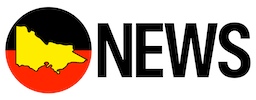

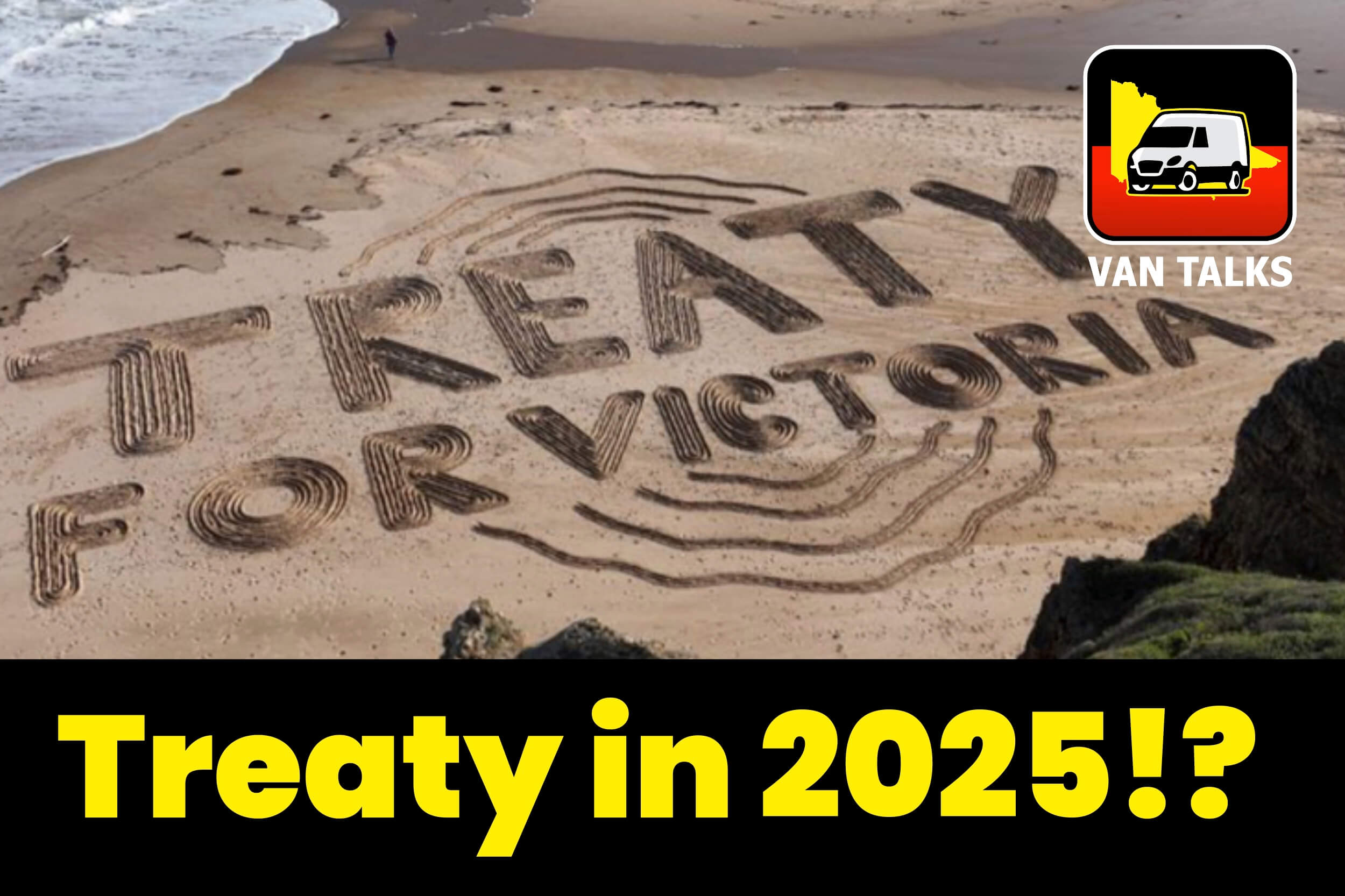
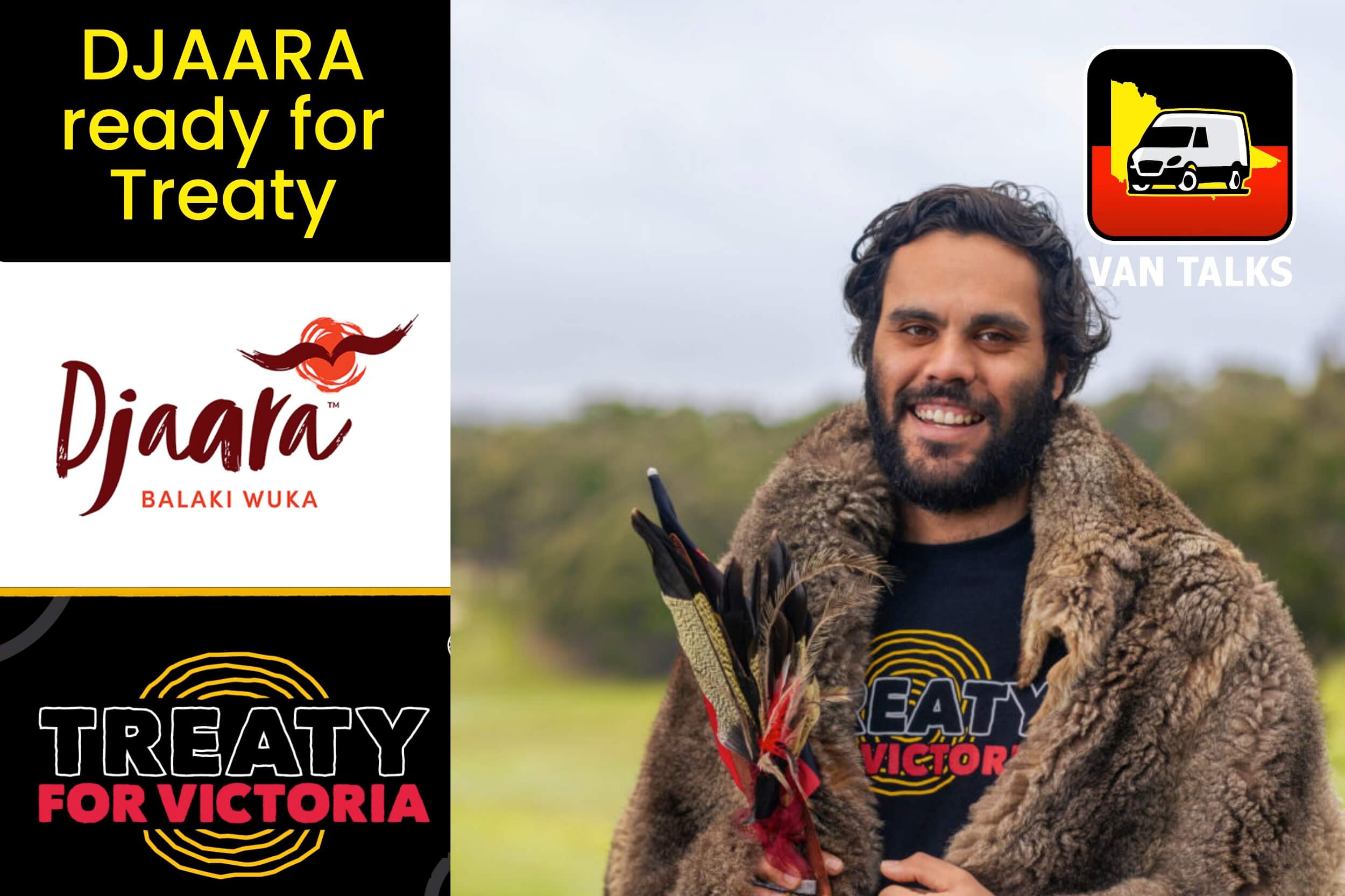
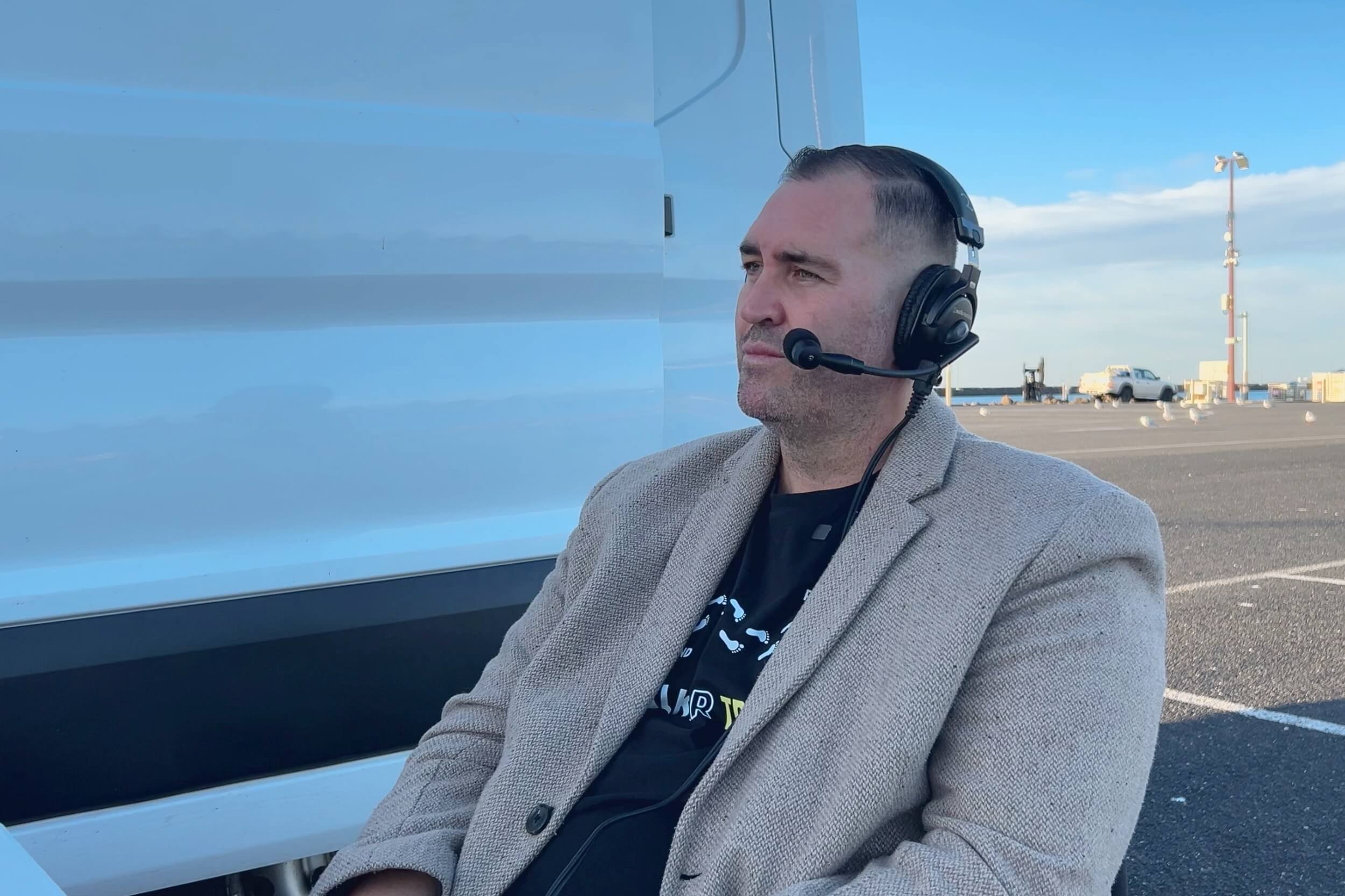
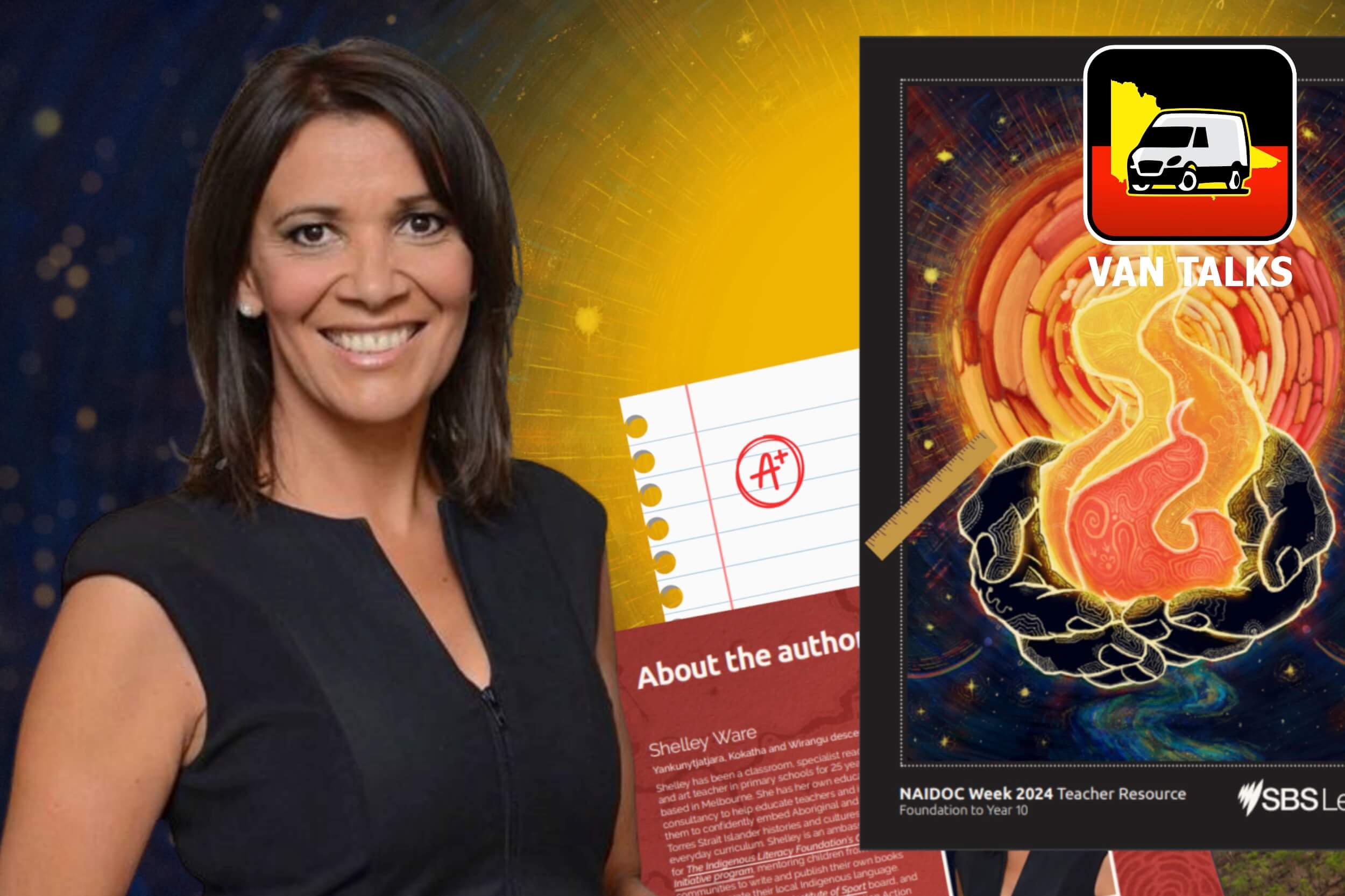
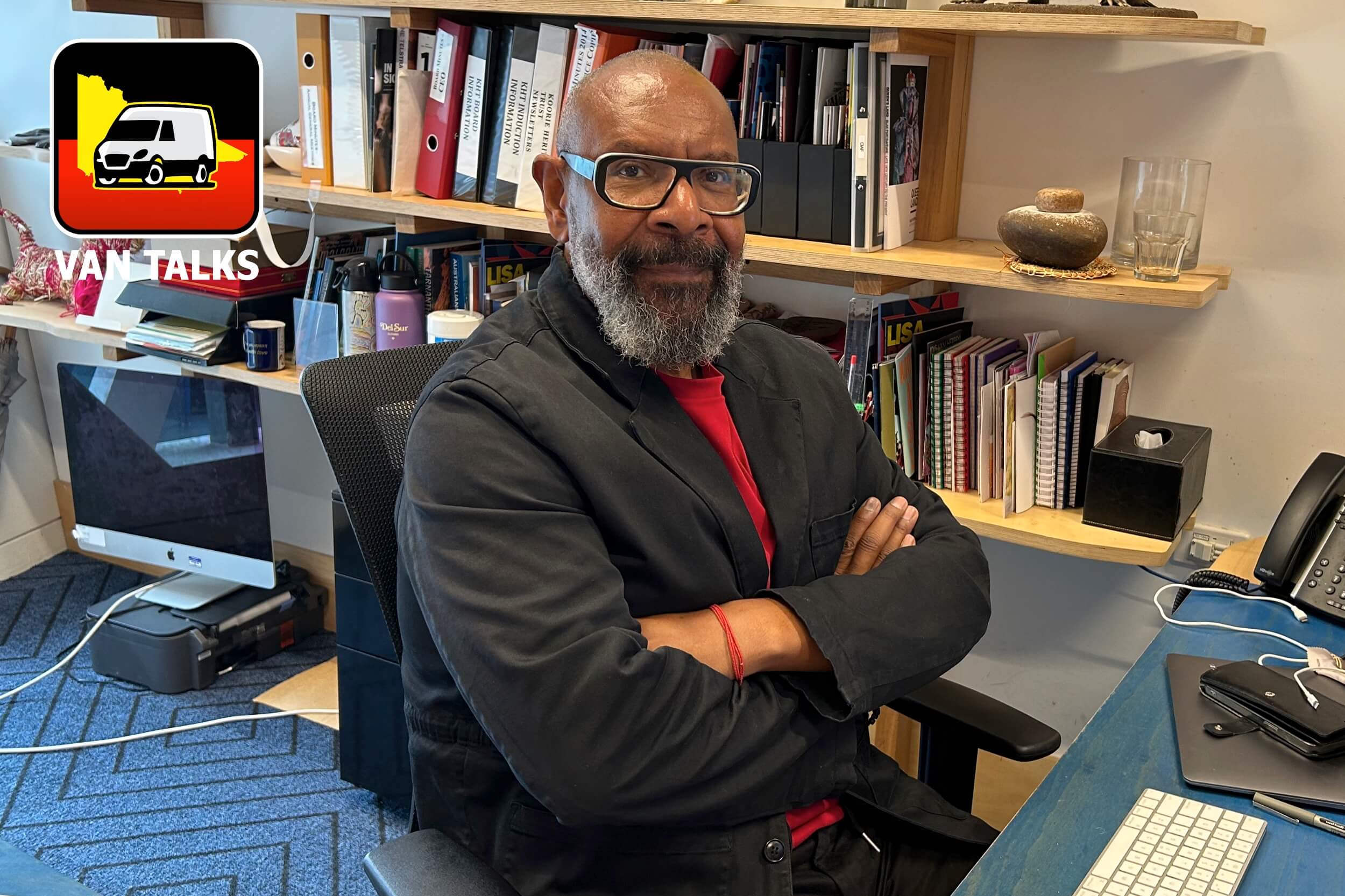

0 Comments